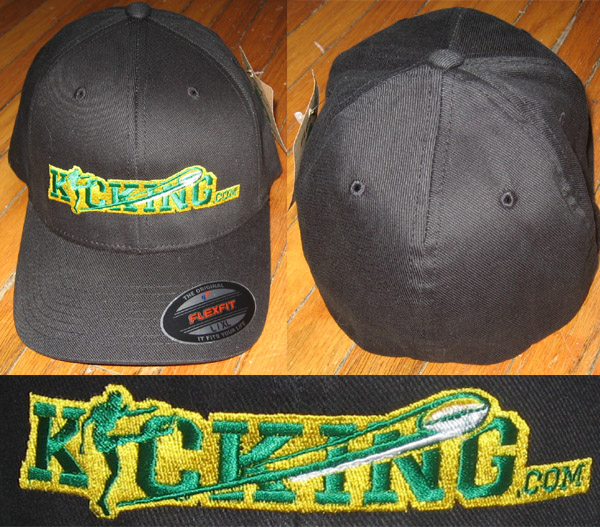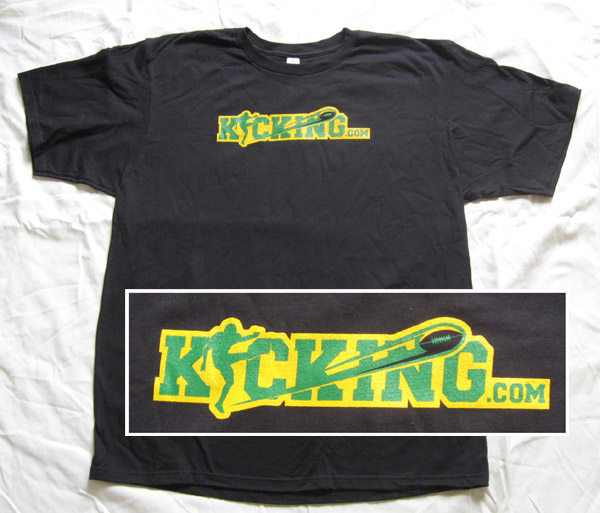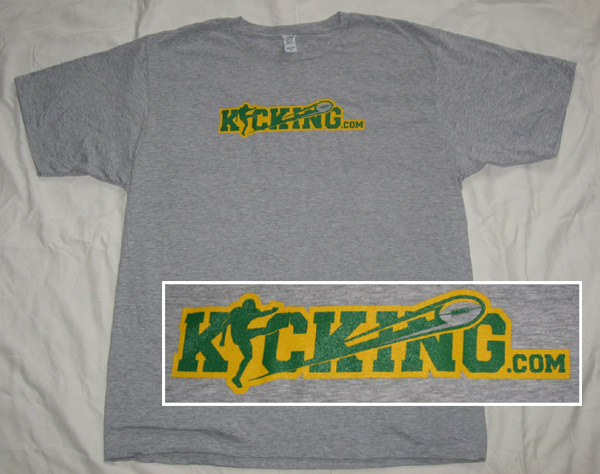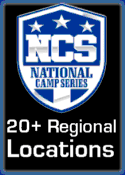| |
 Recruiting: The Life Of A Kicker
Recruiting: The Life Of A Kicker
Chris Sailer
Article posted on 5/27/2005
Here is a summary of the recruiting process as you progress through high school.
Freshman Year: The adventure begins. This is the time to learn how to kick/punt/long snap correctly - it is never too early. The earlier proper mechanics are learned - the better. Muscle memory is a great kicking tool. Enjoy your first season!
- This is the time to find a credible kicking/long snapping coach that is well respected and has proper experience and knowledge to pass along.
- Attend one-on-one kicking lessons, small group kicking sessions, small kicking camps, and large kicking camps and competitions. Experience is invaluable.
Sophomore Year: Time for the hard work to pay off. After a year of learning the ropes - it is now time to be effective in game situations. A great sophomore year can land you on the early recruiting exposure map. Exposure is a necessity!
- Continue working with your same kicking/long snapping coach (hopefully you found a good one!) Never think that you know it all. A good coach will know how to help you develop through each stage of the kicking/long snapping process.
- Continue to attend one-on-one kicking lessons, small group sessions, small kicking camps, and large kicking camps and competitions. The combination of this training schedule will lead to the experience you need to be successful at the next level.
- Sending out your first highlight video may be an option after this season. If you feel like you had a great year and have great film to send out - go for it, it can't hurt. Be sure to add practice footage, which captures your highest potential. Send out as many video/DVD's as you wish. Video should be no longer than 3-5 minutes. Note: Most colleges will never get around to watching your video. Follow up after you have sent out the video to have a coach give you an evaluation of your skills to see where you stand.
- Send bio information along with the video. Bio information should include: Name, Address, Home Phone Number, Cell Phone Number, Email Address, High School, Graduation Year, High School Coaches Name and Number, Kicking Coaches Name and Number, Stats, Awards Won, and Academic Information.
- Attend Chris Sailer Kicking's Annual National Kicking Competition and Combine. This is a very important time to get your name on the map. The Competition (January) and the Combine (May) is the place to make that happen. Your goal: Making the "TOP 12"
Junior Year: It is your time to shine. Your junior year is perhaps your most important year. Being recruited as a kicker/long snapper is extremely difficult. With thousands of high schools playing football each year and only an average of about 40 scholarships being given each year - it is important to make a statement early. Having a great junior year will put you one step ahead of your competition.
- Work harder than ever before. If you want to earn a college scholarship and compete at the next level - you have to decide now. A scholarship is earned, not given.
- Talk to your coach about your desire to play college football. Let him know that you want to do whatever it takes to make it to the next level. Ask him about practice time and the overall preparation for game day. Let him know that you would like to work with the snappers and holders before and/or after practice to make yourself and the team better. Ask if he will give you extra live repetitions during practice. This all needs to be done before the season. Most coaches will appreciate your desire and effort and do whatever they can to help you and the team be successful.
- Continue working with your same kicking/long snapping coach. Never think that you know it all. A good coach will know how to help you develop through each stage of the kicking process, including recruiting.
- Continue to attend one-on-one kicking lessons, small group sessions, small kicking camps, and large kicking camps and competitions.
- Have a great junior season! Great Statistics can only help you!
- After your junior season - make a highlight film. What to include: 4-5 of your best Field Goals or Extra Points, 4-5 Kick-Offs, 4-5 Punts (10-15 if you are just a punter), 2-3 practice session Field Goals (These can be done by yourself, film from directly behind the kicker), 2-3 practice session Kick-Offs, 2-3 practice session punts. The practice session kicks should capture your highest potential. Film dozens of kicks and edit the best of the best kicks. At the very end of the highlight film add an entire game film - choose your best overall game. Send out as many video/DVD's as you wish. Video should be no longer than 3-5 minutes. Keep all of your options open - send film to D1, D2, D3, etc. of interest. Do not put all of your eggs into one basket. Note: Most colleges will never get around to watching your video. Follow up after you have sent out the video to have a coach give you an evaluation of the video to see where you stand. Be persistent, not annoying! Ask your kicking coach to call on your behalf as well.
- Send bio information along with the video. Bio information should include: Name, Address, Home Phone Number, Cell Phone Number, Email Address, High School, Graduation Year, High School Coaches Name and Number, Kicking Coaches Name and Number, Stats, Awards Won, and Academic Information.
- Send a letter of intent along with the video and bio information. Let the school know of your interest to play football for their program.
- Attend Chris Sailer Kicking's Annual National Kicking Competition and Combine. This is the most important time to get your name on the map. The Competition (January) and Combine (May) is the place to make that happen. Your goal: Making the "TOP 12"!
- Make sure that you are on pace at all times to be cleared by the NCAA Clearinghouse. All student-athletes must meet minimum academic standards to play NCAA college sports. Check with your coach and guidance counselor and/or visit www.NCAA.org.
Senior Year: Build upon what you have accomplished. Hopefully by now, through all of the means discussed above, you have put your name on the recruiting map. If not, that is okay as well. The skills that you show your senior year will ultimately decide your kicking future for you.
- Again - make sure that you are on the same page as your coach. He should know your desire and intent to kick at the next level. Hopefully you have already proven yourself to your coach through your hard work years prior. Maintain the solid practice schedule you set up last year. If the schedule was not what you wanted it to be - talk to the coach about improving it.
- Continue working with your same kicking coach. Never think that you know it all. A good coach will know how to help you develop through each stage of the kicking process, including recruiting.
- Continue to attend one-on-one kicking lessons, small group sessions, small kicking camps, and large kicking camps and competitions.
- Have a great senior year! Great Statistics can only help you!
- Half way through your senior year you should make and send out another highlight film. Schools will want to see your progress. The film should be similar in structure to your junior year film. 4-5 of your best Field Goals or Extra Points, 4-5 Kick-Offs, 4-5 Punts (10-15 if you are just a punter), 2-3 practice session Field Goals (These can be done by yourself, film from directly behind the kicker), 2-3 practice session Kick-Offs, 2-3 practice session punts. The practice session kicks should capture your highest potential. Film dozens of kicks and edit the best of the best kicks. At the very end of the highlight film add an entire game film - choose your best overall game. Again - send the film to schools of interest: both schools that you are interested in, and schools that have shown an interest in you. Remember - Keep all of your options open at all times. Follow up after you have sent out the video to have a coach give you an evaluation of the video to see where you stand. Be persistent, not annoying! Ask your kicking coach to call on your behalf as well.
- Send another highlight film after your senior season, which includes the entire season. Follow up after you have sent out the video to have a coach give you an evaluation of the video to see where you stand. Be persistent, not annoying! Ask your kicking coach to call on your behalf as well.
- Attend Chris Sailer Kicking's Annual National Kicking Competition. This is the time to solidify your spot with a college football program. This Competition is the place to make that happen. Your goal: To earn a College Kicking Scholarship!
Notes:
- All D1-A college scholarships are full ride scholarships. This includes tuition, room, and board. There are no partial scholarships at this level. Each program is able to have 85 football players on scholarship at one time. It is common for football programs to have anywhere from 2-3 kickers/punters on scholarship at one time. On average a program rewards a kicker and a punter with a scholarship every 3 to 4 years.
- All other levels of college football operate under different guidelines when it comes to athletic scholarships. Visit www.ncaa.org for more information.
- A D1-A College Football Program may offer an athlete an athletic scholarship at any time during their high school career. However, this mostly occurs at some point during the senior season. For kickers/long snappers, it usually right before the letter of intent signing date.
- Letter of Intent signing date is usually during the first week of February. Only Seniors (or eligible Junior College) players can sign and official Letter of Intent.
- An athlete can verbally commit to an offer made by any D1-A football program at any time. A verbal commitment is not binding until the Official Letter of Intent is signed in February, however, it is expected to be honored.
- During the recruiting process, it is important to be aware of the NCAA rules that guide recruiting. These rules will help you understand what is legal and illegal during the recruiting process both on your end and the football programs end. Again visit www.NCAA.org for an updated version of the recruiting calendar. Make sure that you are on pace at all times to be cleared by the NCAA Clearinghouse. All student-athletes must meet minimum academic standards to play NCAA college sports. Check with your coach and guidance counselor.
- Create a checklist of things that are important to you when making a final decision as to which college to attend. Include things like: overall academics, major availability, strength of football program, the opportunity to play right away, coaching staff, location, scholarship vs. walk-on, extracurricular activities, etc. Choose the college that has the most of what you want.
- Be open-minded throughout the recruiting process. Keep all of your options open at all times and be aware all possibilities. Remember, it is called recruiting for a reason - don't believe everything that you hear. Nothing is final until it is final. Trust in those most important to you when making decisions. Follow your heart! There are hundreds of opportunities out there to play college football, do your research and find the right fit for you. Set goals, work hard, and never give up. If you do your best, you will end up at the place that is best for you.
Learn more about Chris Sailer >>>
Read more Expert Articles >>>
 | What a great service!! |  | | -- College Coach | |
|
|

 Recruiting: The Life Of A Kicker
Recruiting: The Life Of A Kicker


 Doug and Tommy's Frequently Asked Questions
Doug and Tommy's Frequently Asked Questions




